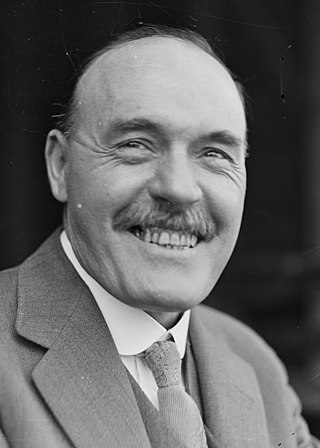Related Research Articles

Ballina is an electoral district of the Legislative Assembly in the Australian state of New South Wales.
Byron was an electoral district of the Legislative Assembly in the Australian state of New South Wales created in 1913, replacing Rous, and named after Cape Byron. With the introduction of proportional representation in 1920, Byron absorbed Lismore and Clarence and elected three members. With the end of proportional representation in 1927, it was redivided into the single-member electorates of Byron, Lismore and Clarence. In 1988, Byron was replaced by Ballina and Murwillumbah.
Kurri Kurri was an electoral district of the Legislative Assembly in the Australian state of New South Wales created in 1927, with the abolition of the multi-member electorates of Newcastle and Maitland and named after the Hunter Region town of Kurri Kurri. It was abolished in 1968 and replaced by Wallsend.
Ingleburn was an electoral district of the Legislative Assembly in the Australian state of New South Wales, created in 1981, and named after and including the Sydney suburb of Ingleburn. It was abolished in 1988 and largely replaced by Macquarie Fields.
Members of the New South Wales Legislative Assembly who served in the 43rd parliament held their seats from 1971 to 1973. They were elected at the 1971 state election, and at by-elections. The Speaker was Sir Kevin Ellis.
Ipswich was an electoral district for the Legislative Assembly in the Australian state of New South Wales created for the July 1859 election, partly replacing Stanley Boroughs and including Ipswich. It was abolished in December 1859 as a result of the separation of Queensland.
Stanley Tunstall "Stepper" Stephens OBE was an Australian politician. He was a Country Party member of the New South Wales Legislative Assembly from 1944 to 1973, representing the electorate of Byron. He served as Minister for Housing and Minister for Co-operative Societies in the Askin Coalition government.
Members of the New South Wales Legislative Assembly who served in the 35th parliament held their seats from 1947 to 1950. They were elected at the 1947 state election, and at by-elections. The Speaker was Bill Lamb.

The 1930 New South Wales state election was held on 25 October 1930. The election was conducted in single member constituencies with compulsory preferential voting. The election occurred at the height of the Great Depression and was a landslide victory for the expansionary monetary policies of Jack Lang.
Members of the New South Wales Legislative Assembly who served in the 27th parliament of New South Wales held their seats from 1925 to 1927. They were elected at the 1925 state election on 30 May 1925. The Speaker was James Dooley.
John Charles (Jack) Boyd was an Australian politician and member of the New South Wales Legislative Assembly from 1973 until 1984. He was a member of the Country Party and its successors.

The 1925 New South Wales state election was held on 30 May 1925. This election was for all of the 90 seats in the 27th New South Wales Legislative Assembly and was conducted in multiple-member constituencies using the Hare Clark single transferable vote. This was the last election to use STV to elect the NSW Assembly.
Lakemba, an electoral district of the Legislative Assembly in the Australian state of New South Wales, has had one incarnation, from 1927 until the present.
Canterbury, an electoral district of the Legislative Assembly in the Australian state of New South Wales has had two incarnations, from 1859 to 1920 and 1927 to the present.
This is a list of electoral district results for the 1973 New South Wales state election.
The 1927 New South Wales state election was for 90 electoral districts returning 90 members and all elections were held on 8 October 1927.
The 1925 New South Wales state election was for 90 seats representing 24 electoral districts, with each district returning between 3 and 5 members. This was the third and final election in New South Wales that took place under a modified Hare-Clark voting system. The average number of enrolled voters per member was 14,690, ranging from Sturt (10,297) to Ryde (19,119).
The 1922 New South Wales state election was for 90 seats representing 24 electoral districts, with each district returning between 3 and 5 members. This was the second election in New South Wales that took place under a modified Hare-Clark voting system. The average number of enrolled voters per member was 13,785, ranging from Sturt (10,386) to Ryde (15,722).
Byron, an electoral district of the Legislative Assembly in the Australian state of New South Wales was created in 1913 and abolished in 1988.
Armidale, an electoral district of the Legislative Assembly in the Australian state of New South Wales, had two incarnations, the first from 1894 to 1920, the second from 1927 to 1981.
References
- 1 2 "The Hon. Stanley Tunstall Stephens". Former members of the Parliament of New South Wales . Retrieved 13 May 2019.
- ↑ "Writ of election: Byron". New South Wales Government Gazette . No. 10. 19 January 1973. p. 145. Retrieved 30 July 2020– via Trove.
- ↑ Green, Antony. "1973 Byron by-election". New South Wales Election Results 1856-2007. Parliament of New South Wales . Retrieved 30 July 2020.